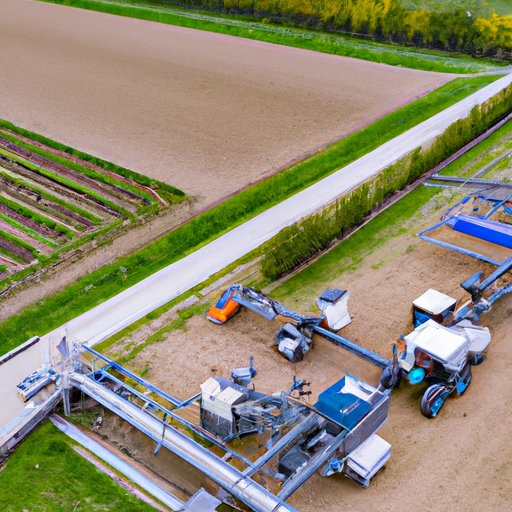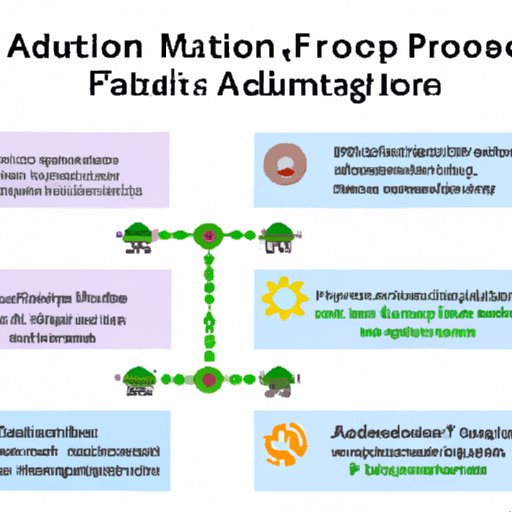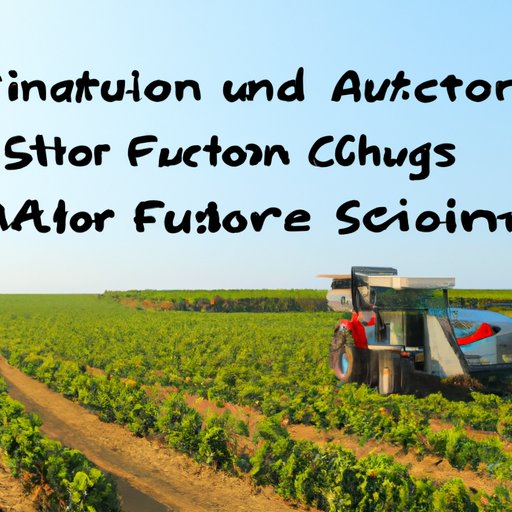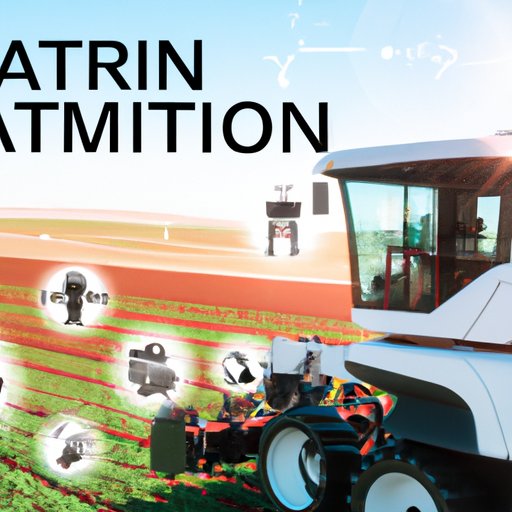Introduction
In recent years, technology has been revolutionizing the agricultural industry. One of the key advances in this area is farm automation, which is a set of technologies used to automate various farming processes. Farm automation is becoming increasingly important as farmers look for ways to reduce costs, improve efficiency, and increase crop yields.
Definition of Farm Automation
Farm automation is the use of machines, sensors, and software to automate the various processes involved in farming. It is designed to reduce labor costs, improve crop quality, and increase efficiency. Farm automation can be used in many different areas, including planting, harvesting, irrigation, soil management, and pest control. The types of automation used vary from farm to farm, depending on their specific needs.

Overview of Farm Automation Technology
Farm automation technology includes a variety of components, such as sensors, cameras, GPS-guided machinery, drones, robotic harvesters, and artificial intelligence (AI). Sensors are used to monitor environmental conditions, such as soil moisture and temperature, while cameras and drones can be used to monitor crops remotely. GPS-guided machinery can be used to plant, spray, and harvest crops with precision. Robotic harvesters can be used to pick fruits and vegetables quickly and accurately. AI can be used to analyze data and make decisions about crop management.

Benefits of Implementing Farm Automation
Farm automation offers numerous benefits to farmers. According to a study conducted by the American Society of Agricultural and Biological Engineers, “the adoption of farm automation technologies can improve crop yield, enhance safety, reduce labor costs, and improve the quality of produce.” Here are some of the key benefits of implementing farm automation.
Increased Efficiency
One of the major benefits of farm automation is increased efficiency. Automation reduces the time and effort required to complete certain tasks, such as planting, harvesting, and spraying. This can help farmers save time and money, while also increasing their crop yields.
Improved Crop Quality
Another benefit of farm automation is improved crop quality. Automation can help farmers reduce the amount of time and effort required to complete certain tasks, such as harvesting and weeding. This can help farmers produce higher quality crops and ensure that they are harvested at the optimal time.
Reduced Labor Costs
Farm automation can help farmers reduce their labor costs. By automating certain tasks, such as planting and harvesting, farmers can reduce the amount of manual labor required. This can help them save money and increase their profits.
Challenges of Farm Automation
While farm automation offers many benefits, there are also some challenges associated with it. Here are some of the key challenges of implementing farm automation.
High Initial Investment
One of the main challenges of farm automation is the high initial investment. Automation technologies can be expensive, and farmers must invest in the necessary equipment and software upfront. However, in the long run, the increased efficiency and reduced labor costs can more than make up for the initial investment.
Technological Issues
Another challenge of farm automation is technological issues. Automation technologies are complex and require regular maintenance and updates. If something goes wrong with the system, it can disrupt the entire operation. Farmers must be prepared to deal with any technical issues that may arise.
Examples of Farm Automation in Action
Farm automation is being used in a variety of ways. Here are some examples of how farm automation is being used in the real world.
Automated Irrigation System
An automated irrigation system is a great example of farm automation in action. This system uses sensors to monitor soil moisture levels and then automatically adjusts the water flow accordingly. This helps farmers reduce water waste and ensure that their crops are receiving the correct amount of water.
Automated Seeding System
An automated seeding system is another example of farm automation in action. This system uses robotic arms to accurately and quickly plant seeds. This helps farmers save time and reduce labor costs, while also ensuring that their crops are planted correctly.
Future of Farm Automation
Farm automation is continually evolving and becoming more advanced. In the future, farmers will be able to use autonomous machines and IoT-connected farms to further increase efficiency and reduce labor costs. Here are some of the key trends in farm automation.
Autonomous Machines
Autonomous machines, such as robotic harvesters, are becoming increasingly popular in the agricultural industry. These machines are capable of performing various tasks, such as planting, harvesting, and spraying, without direct human intervention. This can help farmers save time and reduce labor costs.
IoT Connected Farms
The Internet of Things (IoT) is transforming the way farmers manage their farms. IoT-enabled devices, such as sensors and cameras, can be used to monitor environmental conditions and crop health. This can help farmers make more informed decisions about crop management and increase their overall efficiency.

Tips for Choosing the Right Farm Automation Solution
When choosing a farm automation solution, it is important to consider your needs and research vendors. Here are some tips for choosing the right farm automation solution.
Consider Your Needs
Before investing in a farm automation solution, it is important to consider your needs. What type of tasks do you need to automate? Are there any specific features or technologies that you require? Answering these questions will help you narrow down your choices and choose the best solution for your needs.
Research Vendors
Once you have identified your needs, it is important to research vendors. Read reviews, compare prices, and ask questions to make sure you are getting the best value for your money. It is also important to investigate the vendor’s customer service and support options to ensure that you will get the help you need if something goes wrong.
Investigate Support Options
Finally, it is important to investigate the vendor’s support options. Make sure that they offer quick response times, knowledgeable technicians, and comprehensive warranties. This will ensure that you are getting the best possible service and that your farm automation solution will last for years to come.
Conclusion
Farm automation is becoming increasingly important in the agricultural industry. It can help farmers reduce labor costs, increase efficiency, and improve crop quality. While there are some challenges associated with farm automation, such as high initial investment and technological issues, the benefits far outweigh the drawbacks. As technology continues to evolve, so too will farm automation. In the future, autonomous machines and IoT-connected farms will become increasingly common, revolutionizing the way farmers manage their farms. If you are considering investing in farm automation, it is important to consider your needs, research vendors, and investigate support options to ensure that you are getting the best value for your money.
(Note: Is this article not meeting your expectations? Do you have knowledge or insights to share? Unlock new opportunities and expand your reach by joining our authors team. Click Registration to join us and share your expertise with our readers.)
